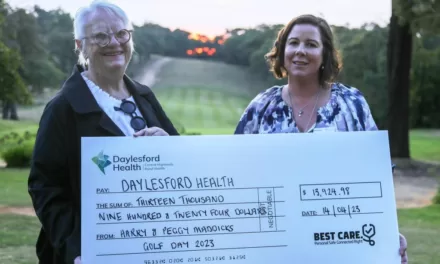Andrew Gallagher
As we age maintaining our health becomes increasingly important.
Healthy ageing is not merely the absence of disease but rather it encompasses a wholistic approach including physical, mental and social wellbeing.
Exercise is one of the most effective ways to promote healthy ageing. Engaging in regular physical activity can significantly enhance the quality of life, improve longevity and reduce the risk of chronic disease.
The role of exercise is critical in healthy ageing for several reasons:
- Physical Health : Engaging in regular physical activity helps to maintain and improve cardiovascular health, muscle strength, flexibility, and importantly balance and bone density. The ageing process leads to a natural decline in muscle strength and bone density, resulting in increased frailty and risk of falls. Engaging in weight bearing exercises such as walking, jogging or resistance training will mitigate these age related changes.
- Mental well-being: Increasingly, scientific evidence is demonstrating important links between exercise and mental health. In particular, exercise has been shown to alleviate the symptoms of depression and anxiety. The release of endorphins (feel-good hormones) released as a consequence of physical activity can improve mood and emotional wellbeing as well as reduce the day to day aches and pains associated with ageing. In addition regular exercise has been shown to enhance cognitive function and memory and is increasingly seen as an important tool to arrest the cognitive decline associated with ageing.
- Social Engagement: group exercise classes or community activities, such as walking groups, foster social connections thus reducing feelings of loneliness and isolation often experienced by older adults. Social interaction is not only important for mental health but can also provide the necessary motivation to stay physically active.
Types of Exercise Beneficial for Older Adults
When considering exercise for healthy ageing, it is important to include range of activities that address the key aspects of fitness. The main types of exercise that are particularly beneficial are:
- Aerobic exercise: This includes activities such as walking, cycling or swimming that are excellent for improving cardiovascular health and endurance. Current recommendations are that you engage in at least 150 minutes of moderate aerobic activity a week.
- Strength Training: Incorporating resistance training using body weight, resistance bands or weights at least twice a week can help reduce the decline in muscle mass as well as increase strength and function.
- Flexibility and Balance Exercises: Stretching and balance exercises such as yoga or tai chi can improve flexibility, coordination and balance. Engaging in these activities is important for preventing falls as well as maintaining mobility as we age.
- Functional Exercise: This type of exercise mimics the movements required in everyday day tasks such as squatting, lifting or reaching above your head. This type of exercise not only enhances strength and stability, but enables easier and safer engagement in the activities of daily living.
Practical Tips For Incorporating Exercise into Daily Life.
- Getting back into regular exercise can seem daunting , however there are simple and practical ways to incorporate exercise into daily life.
- Set Realistic Goals: Begin slowly and build your exercise sessions up in both intensity and duration. Why not begin with just a 20 minute walk each day.
- Find activities you enjoy: Engaging in activity you enjoy will make it easier to stick to your routine.
- Make it Social: Where possible involve friends, including the 4 legged ones, or family in your activity/exercise regime. This way exercise will be more fun, and there is always the added benefit of that post exercise “coffee and chat”.
- Schedule Your Workouts: Consistency is important when developing new habits which is essentially what exercise is. You are more likely to develop the “habit “of exercise if you schedule it like any other appointment in your life. Don’t make the mistake of trying to fit exercise in. Prioritise exercise as essential part of your day. Try as much as is possible to make your exercise appointment at the same time each day.
- Listen to Your Body: It is important to listen to your body if you feel pain or discomfort modify the activity or consult a health professional.
- Stay hydrated and Nourished: Proper nutrition is necessary to support an active lifestyle . Consuming a balanced diet with plenty of fresh fruit and vegetables (a “rainbow” diet), whole grains and lean protein is essential to fuel your body and sustain or increase muscle mass.
Exercise is the foundation of healthy ageing. It not only promotes physical health but makes a significant contribution to mental well being but can also foster social engagement. Research strongly suggests that older adults can improve their quality of life, reduce their risk of chronic disease and achieve a longer “health span” (not just a longer lifespan) through incorporating physical activity into their daily lives.
For more information about exercise and healthy ageing, read Peter Attia’s best selling book, Outlive: The Science and Art of Longevity (Harmony/Rodale, 2023).
Andrew Gallagher is a physiotherapist at Springs Medical and a member of The Wombat Post Editorial Committee. This is the first in a series of articles on maintaing health and fitness.






